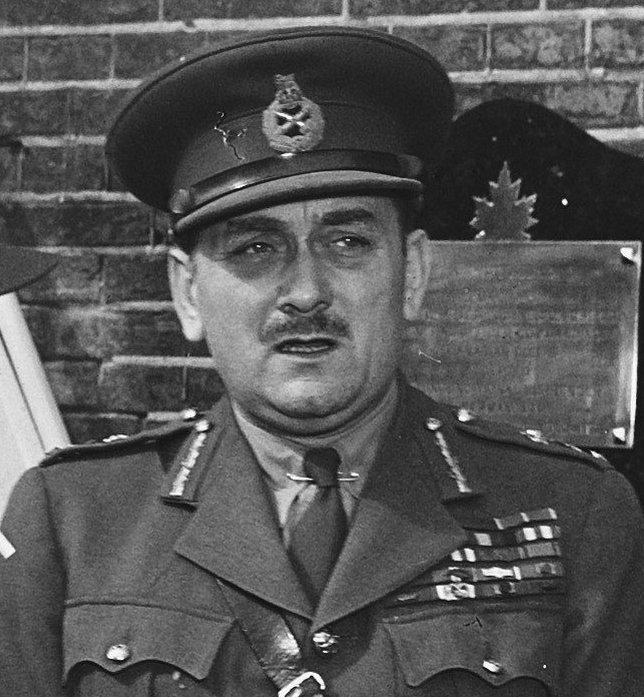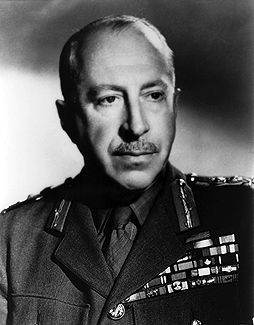Guy Granville Simonds, CC, CB, CBE, DSO, CD, artillery officer, general (born 23 April 1903 in Bury St. Edmunds, England; died 15 May 1974 in Toronto, ON). Commissioned in 1924, Simonds was a career army officer. During the Second World War, he rose quickly to lieutenant-general and commanded II Canadian Corps in northwest Europe. Simonds remained in the army after the war and became chief of the general staff (CGS). Innovative and hard driving, yet reserved, he is widely regarded as the best Canadian general of the Second World War.
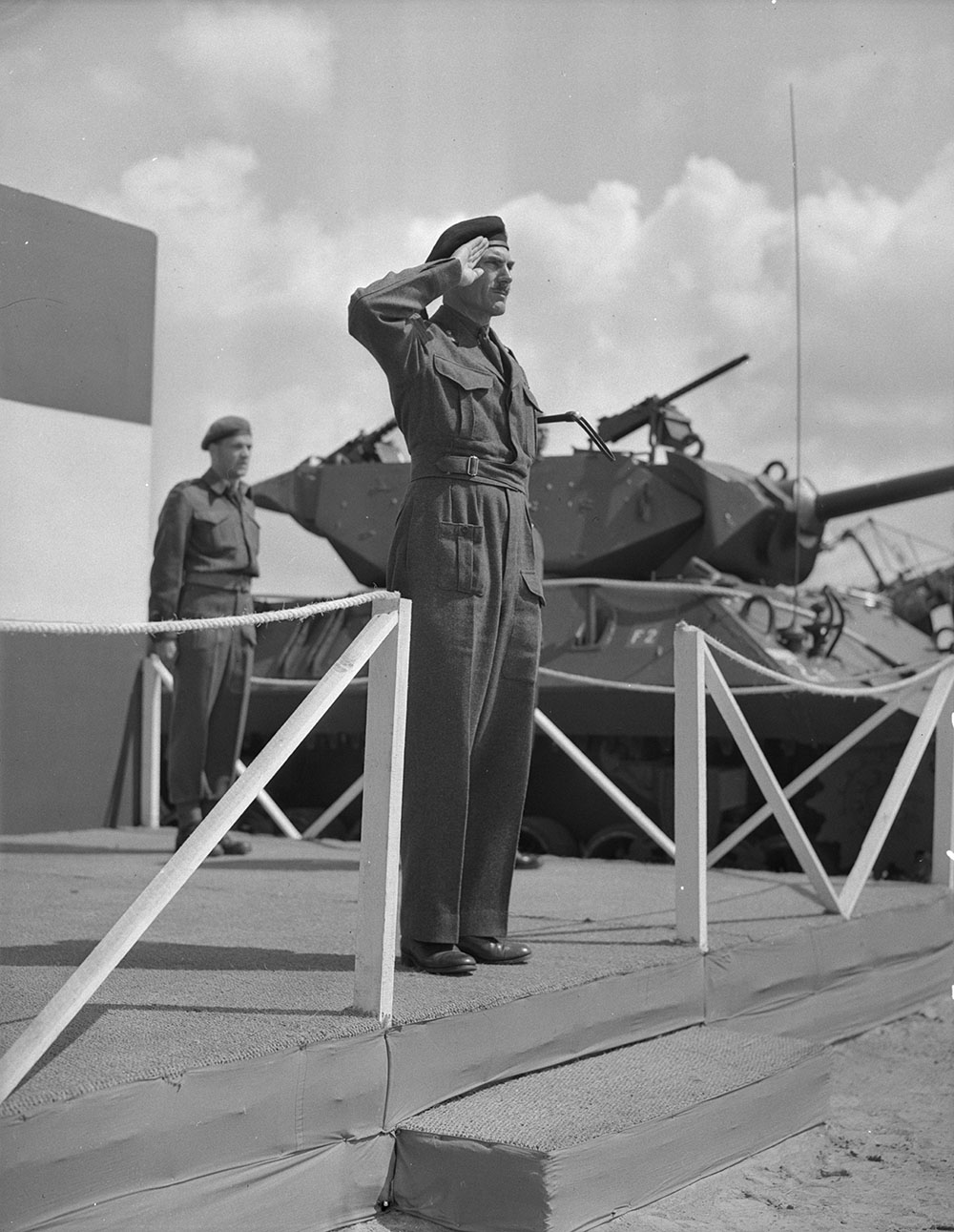
Early Life and Education
Guy Simonds was the son of British Major Cecil Simonds and his wife, Eleanor (Easton). In 1911, Simonds immigrated with his wife and four children to Victoria, British Columbia. In 1914, when the First World War began, he was recalled to Britain by the army, only to return in 1919.
Guy Simonds attended Victoria’s Collegiate School, then went to Ottawa’s private Ashbury College in 1919. In August 1921, he entered the Royal Military College of Canada (RMC) in Kingston, Ontario, as an officer cadet. In 1924, Simonds was commissioned as a lieutenant into the Royal Canadian Artillery. He received several awards on graduation in 1925.
Prewar Army Career
Upon graduation from RMC, Guy Simonds immediately joined Canada’s small Permanent Force. Between 1925 and 1932, he served with Royal Canadian Horse Artillery (RCHA) batteries in Kingston and Winnipeg. Simonds was appointed brevet captain in July 1929 and married Winnipeg native Katherine Taylor in August 1932. The next month, he and his new wife went to Britain for Simonds to attend the Long Gunnery Staff Course. While Simonds travelled to various artillery schools and ranges, the couple lived near Shoeburyness, Essex, the location of the original School of Gunnery. Simonds was promoted captain in April 1933, and their first child, Ruth, was born in June.
The family returned to the RCHA in Kingston, where son Charles was born in 1934. Simonds then attended the two-year course at the British Army Staff College, Camberley, which began in January 1936. When Simonds graduated in December 1937, his British instructors considered him one of their outstanding students.
Simonds returned to Canada in early 1938 to teach at RMC as a temporary major. He also wrote articles for the Canadian Defence Quarterly, in which he debated concepts of mechanized warfare with future corps commander Tommy Burns. These articles confirmed Simonds as one of the best military minds in the Canadian army.
Second World War
After Canada proclaimed war on Germany on 10 September 1939, Guy Simonds was appointed as General Staff Officer Grade 2 (Operations) for the newly raised 1st Canadian Infantry Division. The division sailed to Britain in December.
Britain
Simonds was promoted lieutenant-colonel in July 1940 to command 1st Field Regiment, RCHA. He was only in command for four months when Lieutenant-General Andy McNaughton directed him to establish the Canadian Junior War Staff Course. This was an intensive training program for junior divisional staff officers and began in January 1941.
Simonds then moved very quickly through several senior appointments. In May 1941, he was promoted colonel and appointed General Staff Officer Grade 1 for 2nd Canadian Infantry Division. Three months later, he was promoted to brigadier-general and an appointment at HQ I Canadian Corps, where General Bernard Montgomery commended him. After a month-long visit to Tunisia in August 1942 to observe Montgomery’s Eighth British Army in action, Simonds took command of 1st Canadian Infantry Brigade.
Sicily
Guy Simonds only commanded 1st Canadian Infantry Brigade for a few months before he was promoted to major-general and given command of 2nd Canadian Infantry Division in April 1943. Two weeks later, he replaced the commander of 1st Division, who had been killed in an air crash while en route to Egypt for a planning conference for Operation Husky, the Allied invasion of Sicily. (See Canada and the Italian Campaign.) Simonds and his senior staff immediately flew to Cairo on 1 May to be briefed on the operation.
In Egypt, Simonds learned his division would serve as part of Eighth Army. He confirmed the Canadian part in the plan and cabled it to his staff in Britain. After further discussions, Simonds returned to Britain on 11 May. With D-Day for Operation Husky set for 10 July, units of 1st Canadian Division immediately moved to Scotland for training in amphibious assault landings and mountain warfare.
With training complete, Canadian units sailed to the Mediterranean to rendezvous with British and American forces. On 10 July, 1st Division’s 1st and 2nd Infantry Brigades landed against light opposition on the southwestern tip of Sicily. The battle for the island ended on 17 August. It had been a tough slog through mountainous terrain against strong delaying actions by the enemy. Simonds had handled his division well and again earned the favourable attention of Montgomery.
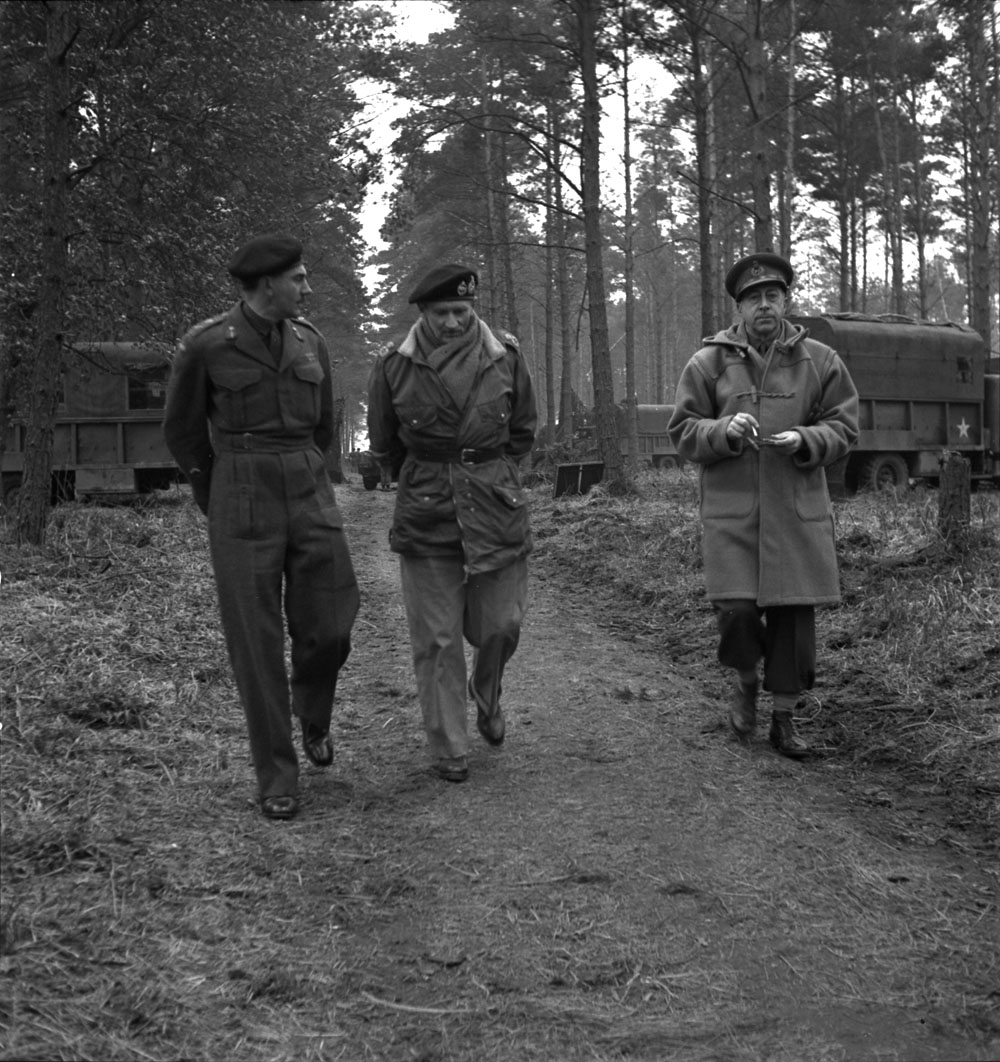
Italy
Under Guy Simonds, 1st Canadian Division landed on the Italian mainland against light resistance on 3 September. Simonds became commander of the newly arrived 5th Canadian Armoured Division on 1 November to give him experience in commanding tanks. He was promoted lieutenant-general on 6 January 1944 in preparation for his next job, commander II Canadian Corps. Simonds commanded the division until 29 January, when he returned to Britain to prepare II Corps for Operation Overlord, the Allied invasion of Normandy.
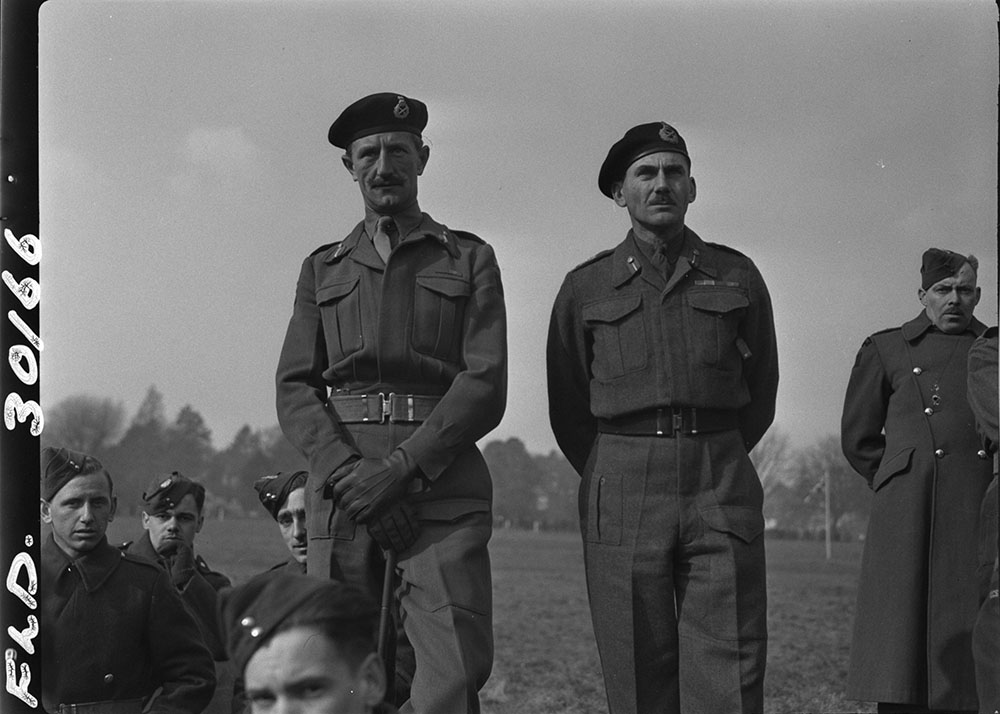
Normandy
Third Canadian Infantry Division landed on D-Day on 6 June and fought through the initial Normandy battles under British command. In subsequent weeks, additional Canadian formations arrived, including II Canadian Corps HQ and 2nd Canadian Infantry Division. Simonds took over the Caen sector on 11 July at a time when the Normandy campaign was stalled. He commanded the corps through four major operations during a five-week period.
Operation Atlantic, the Canadian part of the larger British Operation Goodwood, began on 18 July. While the British advanced across the Orne River to seize high ground, Simonds’s forces did the same farther south. The Anglo-Canadian attack eventually stalled in the face of fierce German resistance after an advance of a few kilometres.
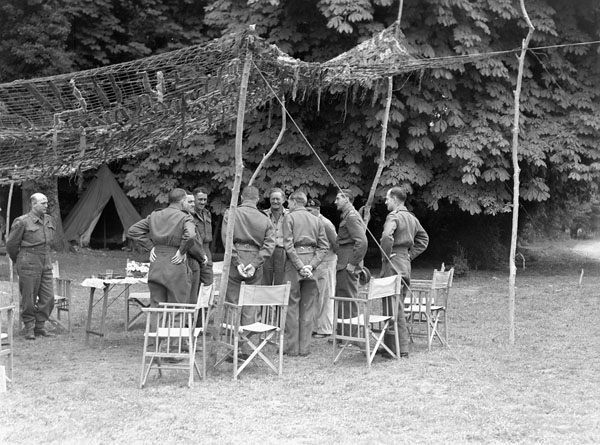
This led to Operation Spring, a holding attack on 25 July by the Canadians. Its aim was to pin down Germans with a simultaneous American breakout farther to the west. Simonds’s force consisted of his two Canadian infantry divisions and two British armoured divisions. He led with his infantry divisions, planning to push the armoured divisions through once the infantry pierced the German line.
When the attack stalled due to heavy German resistance, Simonds decided not to commit his armoured divisions. The attack had, however, drawn German forces away from the successful American breakout. Meanwhile, First Canadian Army HQ became operational in Normandy under Lieutenant-General Harry Crerar. On 31 July, Crerar took II Corps — which now included the newly arrived 4th Canadian Armoured Division — and I British Corps under command.
The successful American breakout forced the Germans to move their panzer divisions to confront them. Once the enemy’s armoured strength was reduced substantially, Montgomery ordered his Anglo-Canadian armies to conduct a major attack by 8 August.
Simonds overcame several problems by adopting innovative solutions. This included attacking at night, advancing simultaneously with fire support, using heavy bombers and carrying the infantry in armoured personnel carriers (APCs). Perhaps Simonds’s greatest innovation was creating the APCs from obsolete self-propelled guns with their cannons removed. This invention allowed the infantry to move forward at the same speed as the tanks while being protected from enemy fire.
Operation Totalize began on the night of 7 August with bombing attacks. Shortly after, great columns of APCs and tanks rolled forward, straddling the road to Falaise. A massive supporting artillery bombardment began 15 minutes later. The first phase was a complete success.
The second phase of Totalize began on the afternoon of 8 August, an advance led by two armoured divisions that had never been in battle: 4th Canadian and 1st Polish. Their task was to break through the German second defensive line, but things went wrong very quickly. Some American bombers dropped their loads on Allied troops, and the advance was not as quick as Simonds intended. After the Canadian attack recommenced on 9 August, an armoured-infantry battle group ran into heavy opposition and was annihilated. A renewed attack was necessary.
Operation Tractable began on 14 August, using a smoke screen to cover the advance. Two columns moved forward, each led by an armoured brigade and followed by two infantry brigades, with the first infantry brigades carried in APCs. Its aim was to close the Falaise Gap to prevent the Germans from withdrawing to the east from the Falaise Pocket. After some of the fiercest fighting yet experienced, the gap was finally closed on 21 August with huge German losses in men and equipment.
Northwest Europe
Following the closure of the Falaise Gap, Guy Simonds led his corps across the Seine to help capture English Channel ports essential to Allied resupply and pursue the retreating Germans. On 27 September, he took over First Canadian Army from Crerar when Crerar was evacuated to Britain to treat an illness. Simonds successfully led the army through the tough Scheldt Campaign to open the vital port of Antwerp. When Crerar returned on 9 November and resumed command of First Canadian Army, Simonds resumed command of II Corps.
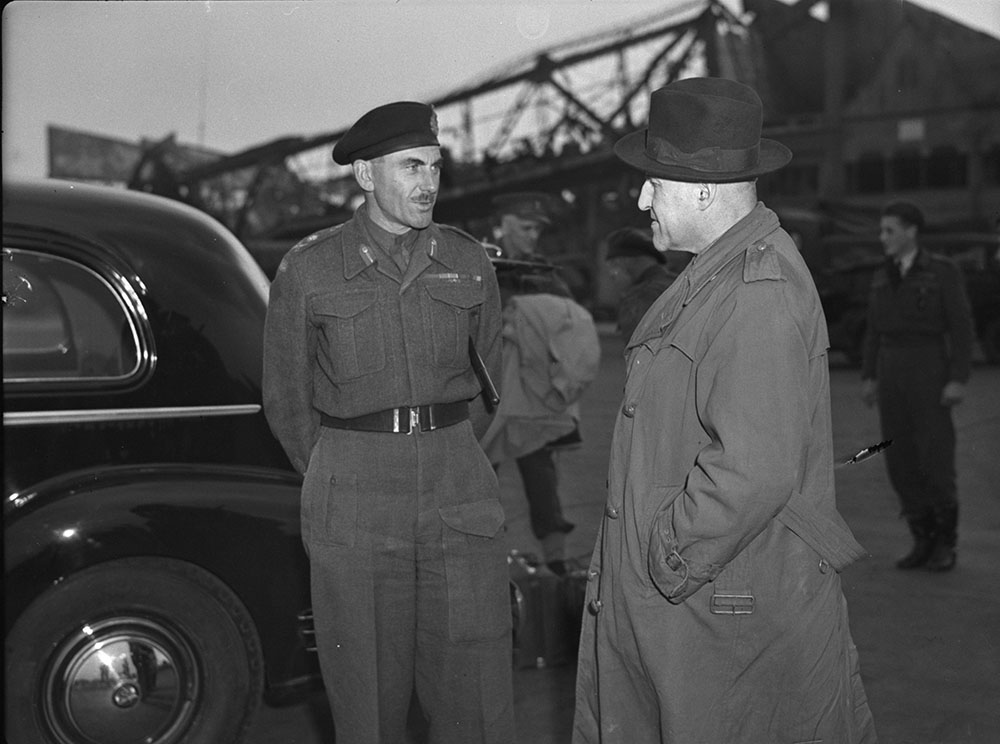
A three-month period of relative inactivity followed for II Corps, known as “The Watch on the Maas.” Planning was underway for Operation Veritable, the Allied entry into Germany. Second and 3rd Infantry Divisions were involved in First Canadian Army’s initial attacks of the Rhineland Offensive on 8 February 1945, but as part of XXX British Corps. The rest of II Corps did not participate due to the narrow frontage of the attack.
On 15 February, II Corps came into the line on the left of XXX Corps, along with its three Canadian divisions plus a British armoured division. Both corps battled forward against stiff German opposition. On 26 February, Operation Blockbuster began, the second phase of the battle. Simonds was substantially reinforced for his mission to break through the Hochwald and II Corps now consisted of three infantry and two armoured divisions, plus an armoured brigade. After a fierce delaying action, the Germans withdrew across the Rhine; by 10 March the west bank was in Allied hands.
Simonds’s final campaign in northwest Europe was the clearance of the northeastern Netherlands and the north German plain. (See also Liberation of the Netherlands.) Fighting continued until Germany surrendered on 5 May.
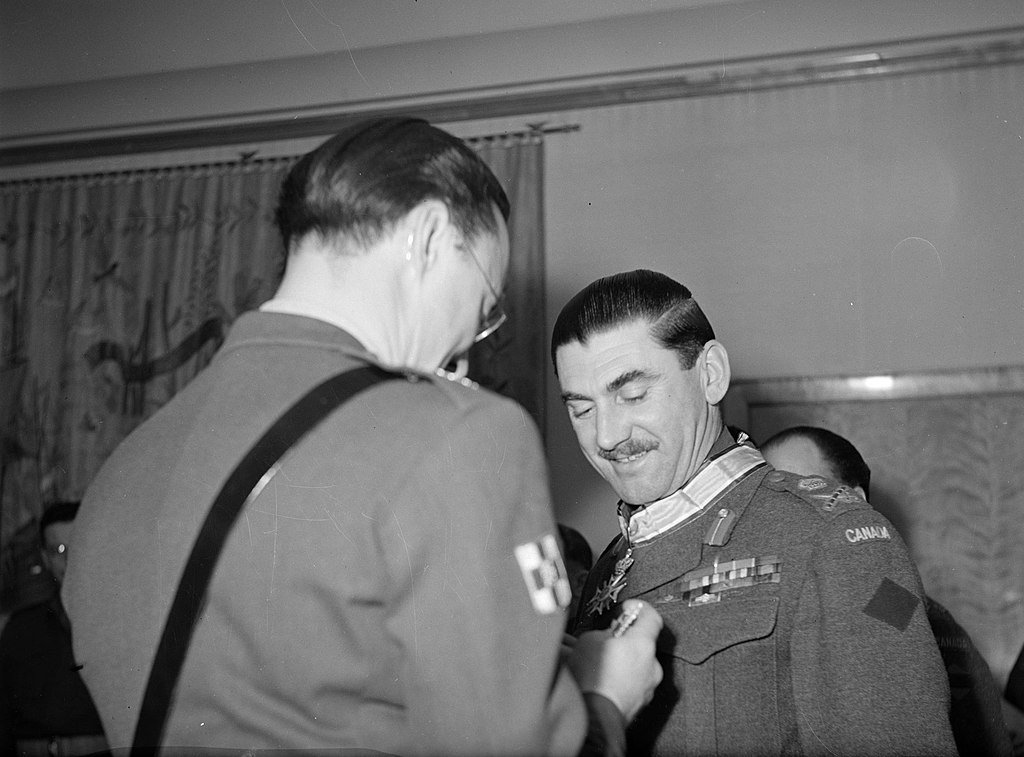
Postwar
Immediately after the war ended, Guy Simonds supervised the repatriation of Canadian soldiers. When Charles Foulkes, his junior in seniority, was selected as Chief of the General Staff (CGS) in August 1945, Simonds was upset and considered resigning. Instead, he attended the 1946 course at the Imperial Defence College in London. After the course, Simonds became chief instructor at the college, a unique honour for a Canadian.
Simonds returned to Canada in mid-1949 and became commandant of the National Defence College and the Canadian Army Command and Staff College, both in Kingston. When Foulkes became the first chairman of the newly established chiefs of staff committee, Simonds replaced him as CGS in February 1951.
As CGS, Simonds oversaw the buildup of the Canadian army to provide a brigade for the Korean War and the permanent stationing of a brigade group in West Germany for NATO. (See Canadian Forces in Europe During the Cold War.) He also saw the addition of six additional infantry regiments to the regular army, plus the establishment of Camp Gagetown, New Brunswick, which was large enough to train two divisions simultaneously.
Retirement
After retirement in June 1955, Guy Simonds worked in business and assisted several charitable organizations. Always a strong supporter of Canada’s ties with Britain, he criticized the government’s attempts to forge stronger links with the United States. Simonds strongly opposed the unification of the armed forces (although not the integration of National Defence Headquarters) on the grounds of inherent differences between the three services.
Meanwhile, Simonds and his wife Katherine had not been living together for several years. Shortly before he retired, he met Dorothy Sinclair; he subsequently divorced Katherine and married Dorothy in January 1960. When Simonds died from lung cancer in 1974, he was buried with full military honours in Toronto’s Mount Pleasant Cemetery.

 Share on Facebook
Share on Facebook Share on X
Share on X Share by Email
Share by Email Share on Google Classroom
Share on Google Classroom

